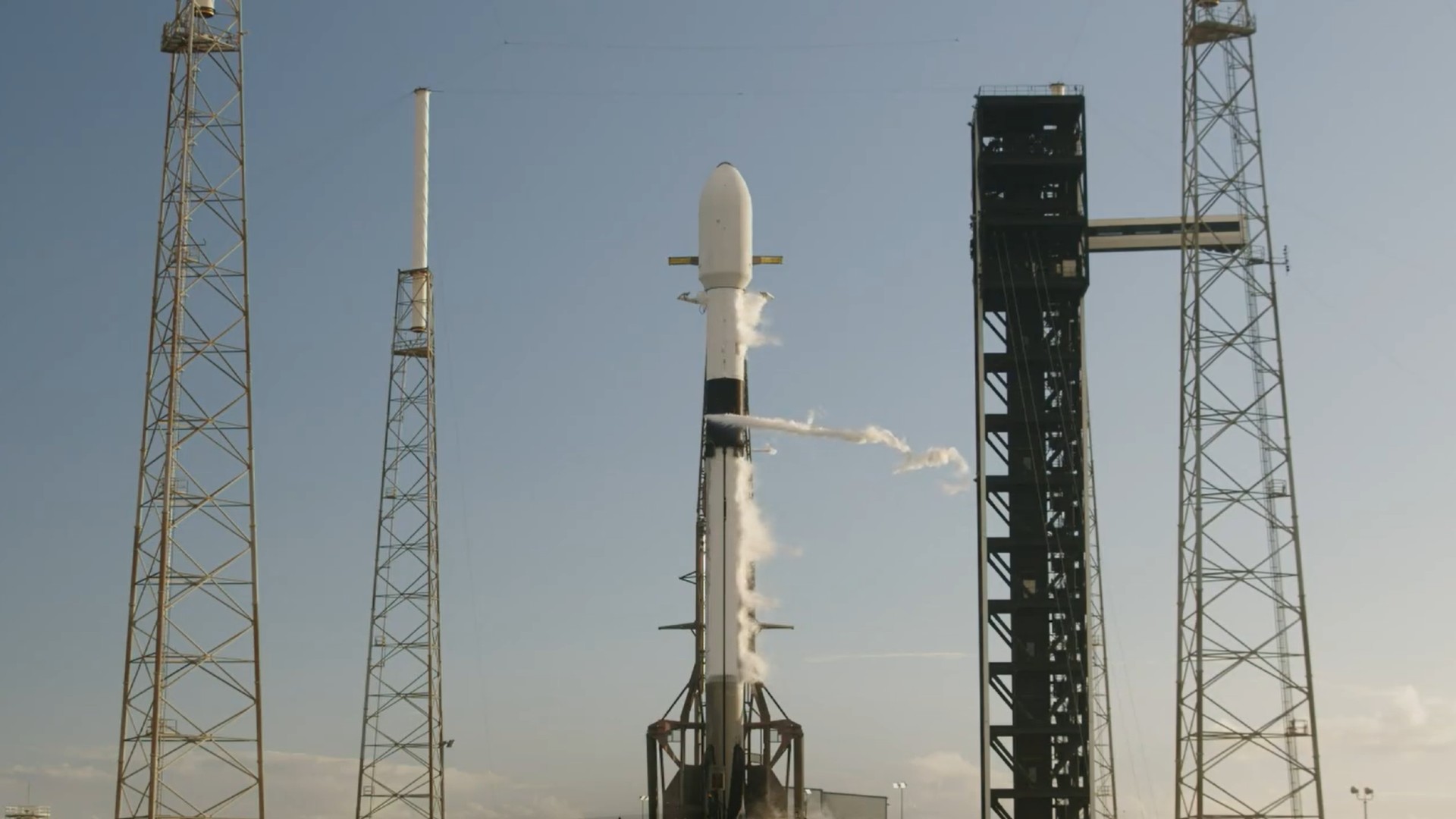SpaceX scrubs Starlink satellite launch due to apparent rocket helium leak
A new launch date has not yet been set.

SpaceX scrubbed a launch of its Starlink satellites this weekend due to an issue with one of its rockets.
The company was scheduled to launch a Falcon 9 rocket containing 23 of its Starlink satellites on Sunday (Nov. 3) from Space Launch Complex 40 (SLC-40) at Cape Canaveral Space Force Station in Florida, but SpaceX held the countdown at two minutes and 36 seconds due to what appears to be a helium leak.
"Hold, hold, hold. Standing down for helium, stage one," a SpaceX team member called out during the live broadcast of the planned launch on X (formerly Twitter). A new launch date has not been set for the mission, designated Starlink 6-77. SpaceX has another Falcon 9 rocket launch planned for Monday (Nov. 4), the CRS-31 robotic resupply flight to the International Space Station (ISS), currently set for 9:29 p.m. EST (0129 GMT on Tuesday, Nov. 5).
When the Starlink 6-77 mission does launch, its Falcon 9 first stage booster will come back down and land on the Just Read the Instructions droneship waiting offshore in the Atlantic Ocean.
This is the third scheduled flight for this particular booster, which also launched the Crew-9 astronaut mission for NASA.
That launch saw just two astronauts fly to the ISS in a SpaceX Crew Dragon spacecraft as opposed to the usual four; two seats were left empty to make room for two NASA astronauts currently aboard the ISS whose spacecraft, Boeing's Starliner capsule, landed uncrewed in September 2024 due to safety concerns after a rocky first crewed flight.
The Starlink 6-77 mission and other Starlink launches like it are all aimed at building out SpaceX's enormous megaconstellation of broadband internet satellites. The company has already launched 100 Falcon 9 rockets in 2024, and the majority of them were dedicated to putting more Starlink spacecraft in orbit.
Get the Space.com Newsletter
Breaking space news, the latest updates on rocket launches, skywatching events and more!
SpaceX currently operates close to 6,500 Starlink satellites in orbit and has plans to loft thousands more. The satellites have been used to provide vital communications to hard-hit areas following natural disasters such as Hurricane Helene or in the wake of conflicts such as Russia's invasion of Ukraine.
But many astronomers have voiced their concerns about the ever-growing Starlink megaconstellation and others like it, citing environmental impacts, the satellites' effects on astronomy, and the optical interference they create in the night sky.
Join our Space Forums to keep talking space on the latest missions, night sky and more! And if you have a news tip, correction or comment, let us know at: community@space.com.

Brett is curious about emerging aerospace technologies, alternative launch concepts, military space developments and uncrewed aircraft systems. Brett's work has appeared on Scientific American, The War Zone, Popular Science, the History Channel, Science Discovery and more. Brett has English degrees from Clemson University and the University of North Carolina at Charlotte. In his free time, Brett enjoys skywatching throughout the dark skies of the Appalachian mountains.









